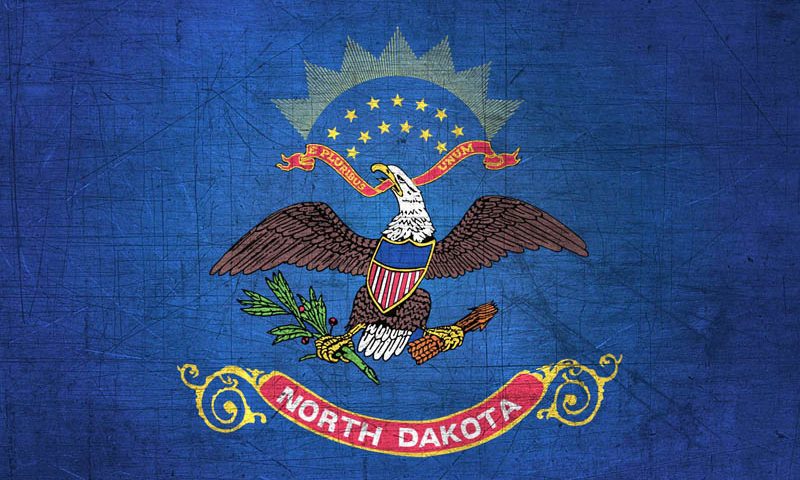
Quick Legal Facts
Statewide Preemption:
No.
Concealed Carry:
The concealed carry of certain knives is prohibited.
Schools:
Possession of firearms and dangerous weapons is prohibited at certain public events and gatherings, as well as schools and school functions.
Critical Dimensions:
Five inches or more – length of a knife blade considered a “dangerous weapon.”
Restricted Knives:
There are no prohibited knives.
The North Dakota statutes which apply to the carry and possession of knives are found in Title 62.1, captioned “Weapons”. Knives which are “dangerous weapons” cannot be carried concealed unless the individual has a North Dakota concealed firearm and dangerous weapon license or a CCW license issued by a state with reciprocity.
Relevant Statutes:
62.1-01-01. General definitions
62.1-02-04. Possession of firearm or dangerous weapon in liquor establishment prohibited – Penalty
62.1-02-05. Possession of a firearm or dangerous weapon at a public gathering – Penalty – Application
62.1-04-01. Definition of concealed
62.1-04-02. Carrying concealed firearms or dangerous weapons – License distinctions
62.1-04-03. License to carry a firearm or dangerous weapon concealed
62.1-04-03.1. Reciprocity
Statewide Preemption:
No.
Selected North Dakota Municipalities – Knife Restrictive Ordinances:
Bismark – 6-08. Weapons
Fargo – 10-0304. Carrying, possession, discharge of dangerous weapons.
Grand Forks – 9-0120. Possession of dangerous weapons in park.
Restrictions on Sale or Transfer:
None noted.
Concealed Carry:
Any knife may be carried openly. A holder of a firearm or dangerous weapon may carry knives, including those classified as dangerous weapons concealed.
Restrictions on Carry in Specific Locations/Circumstances:
Schools, churches, and publicly owned or operated buildings.
- Restricted Locations
The general statute is 62.1-02-05 which provides:
An individual who knowingly possesses a firearm or dangerous weapon at a public gathering is guilty of an infraction. For the purpose of this section, ‘public gathering’ means an athletic or sporting event, a school, a church or other place of worship, and a publicly owned or operated building.
Exceptions are provided for public rest areas and restrooms, state and federal parks, and various categories of law enforcement, military, government officials. There are also exceptions for designated first responders at schools, and private security persons on duty who hold a concealed firearm or dangerous weapon license.
Firearms and dangerous weapons are also restricted under 62.1-02-04 at places for the licensed sale and consumption of beverage alcohol, and bingo gaming activity.
- Concealment
The statutory definition of concealed is found at 62.1-04-01 and provides substantial guidance on the carry of dangerous weapons.
A firearm or dangerous weapon is concealed if it is carried in such a manner as to not be discernible by the ordinary observation of a passerby. There is no requirement that there be absolute invisibility of the firearm or dangerous weapon, merely that it not be ordinarily discernible. A firearm or dangerous weapon is considered concealed if it is not secured, and is worn under clothing or carried in a bundle that is held or carried by the individual, or transported in a vehicle under the individual’s control or direction and available to the individual, including beneath the seat or in a glove compartment. A firearm or dangerous weapon is not considered concealed if it is:
- Carried in a belt holster which is wholly or substantially visible or carried in a case designed for carrying a firearm or dangerous weapon and which is wholly or substantially visible;
- Locked in a closed trunk or luggage compartment of a motor vehicle;
- Carried in the field while lawfully engaged in hunting, trapping, or target shooting, whether visible or not;
- Carried by any person permitted by law to possess a handgun unloaded and a secure wrapper from the place of purchase to that person’s home or place of business, or to a place of repair, or back from those locations; or
- A bow and arrow, rifle, shotgun, unloaded handgun, or a weapon that will expel, or is readily capable of expelling, a projectile by the action of a spring, compressed air, or compressed gas including any such weapon commonly referred to as a BB gun, air rifle, or CO2 gun, while carried in a motor vehicle.
- License
The restriction applicable to the concealed carry of knives which are, or might be dangerous weapons may be avoided by the possession of a valid concealed firearms or dangerous weapon license issued pursuant to 62.1-04-03. North Dakota residents at least 18 years of age may apply. There are two license classes with the difference being out-of-state reciprocity.
North Dakota also recognized concealed weapon permits from other states, including those which do not license the concealed carry of non-firearm weapons per 62.1-04-03.1.
- Dangerous Weapons
North Dakota has two statutory definitions for “dangerous weapon” which may be found at 12.1-01-04 and 62.1-01-01 and are similar, but not identical. The definition at 62.1-01-01 applies to the possession and carry of weapons. The knife pertinent portion thereof provides:
As used in this title, unless the context otherwise requires:
“Dangerous weapon” includes any switchblade or gravity knife, machete, scimitar, stiletto, sword, dagger, or knife with a blade of five inches [12.7 centimeters] or more;
- Automatic Knives
Automatic knives or “switchblades” are not prohibited under North Dakota law. There is no restriction on the manufacturing or sale of such knives. Switchblades along with gravity knives are included within the definition of “dangerous weapons” and subject to some restrictions on concealed carry.
- Consequences
Violations of the dangerous weapon laws in Chapter 62.1 are classified as Class A misdemeanors and as such carry a maximum of 360 days confinement and a fine of up to $3,000.

